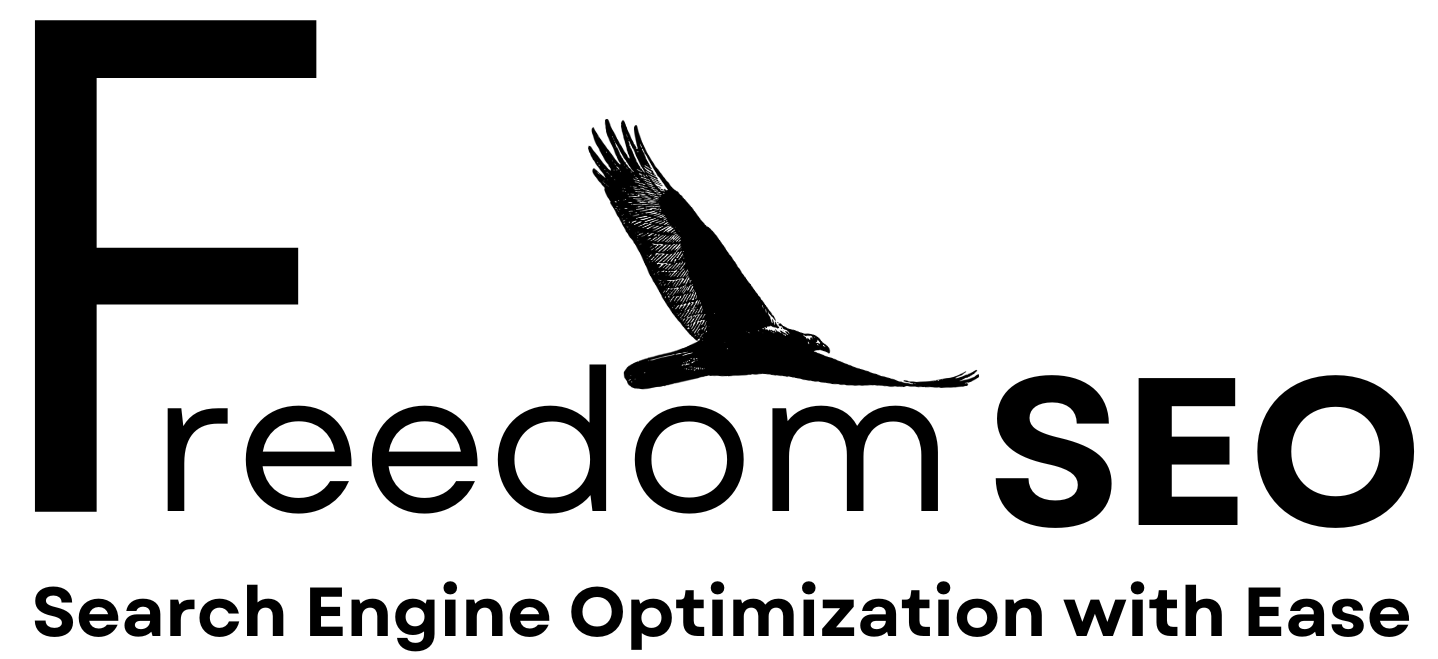7 Essential Tips for Minimalist Website Design

Minimalist website design strips away clutter and transforms digital spaces into clean experiences that put users first. Here is the wild part. Research from the University of Illinois Library shows that focusing only on essentials can make websites not just look better, but actually improve navigation and readability for every visitor. Most people assume minimalist sites are just empty or boring, but great minimalist design is all about subtle strategy and surprising impact. This approach turns less into more with every click.
Table of Contents
Quick Summary
| Takeaway | Explanation |
|---|---|
| Prioritize user-centric design | Focus on enhancing user interaction and clarity in website layout. |
| Implement clear and intuitive navigation | Use logical menu structures and descriptive labels for easy access to information. |
| Choose a limited color palette | Select 2-3 primary colors that support brand identity and ensure readability. |
| Utilize white space effectively | Use generous negative space to reduce cognitive load and enhance content comprehension. |
| Conduct regular testing and improvements | Continuously collect user feedback and refine design for a better user experience. |
1: Understand the Basics of Minimalist Website Design
Minimalist website design transforms complex digital spaces into clean, purposeful experiences that prioritize user interaction and content clarity. At its core, this design philosophy strips away unnecessary elements, focusing on essential functionality and visual simplicity.
Understanding minimalist website design requires recognizing its fundamental principles. According to research from the University of Illinois Library , successful minimalist design centers on user-centric approaches that enhance readability and navigation.
Key characteristics of minimalist website design include:
- Generous white space that creates visual breathing room
- Limited color palettes with strategic chromatic choices
- Typography that communicates clearly without visual clutter
- Intuitive navigation structures
- High-quality, purposeful imagery
The goal is not just aesthetic reduction but strategic communication . By eliminating visual noise, minimalist design guides users precisely where they need to go. This approach demands meticulous planning: every design element must serve a specific purpose, contributing meaningfully to the user’s journey.
Canadian businesses seeking to modernize their online presence can learn more about strategic website optimization to complement their minimalist design approach. Effective minimalism isn’t about making websites look sparse—it’s about creating intentional, user-focused digital experiences that communicate efficiently and elegantly.
Remember, minimalist website design is an art of subtraction. By carefully removing unnecessary design elements, you create digital spaces that are not just visually appealing, but supremely functional.
2: Focus on User Experience and Navigation
In minimalist website design, user experience and navigation are paramount. These elements transform a visually simple website into an intuitive digital environment that guides visitors seamlessly through content.
According to research from the National Center for Biotechnology Information , effective navigation requires strategic design that enables users to access information efficiently. This means creating clear pathways that minimize cognitive load and reduce user frustration.
Key principles for optimizing navigation in minimalist design include:
- Implementing a clean, logical menu structure
- Ensuring consistent placement of navigation elements
- Using clear, descriptive labels for menu items
- Providing intuitive search functionality
- Limiting the number of menu options
Vertical navigation bars work exceptionally well in minimalist designs. They present information simultaneously, allowing users to understand the site’s structure at a glance. This approach reduces the mental effort required to explore your website.
Discover advanced user experience strategies that can elevate your minimalist website’s performance. The goal is creating a digital space where design and functionality converge seamlessly.
Remember, minimalist navigation is not about reducing options but about presenting them with clarity and purpose. Every click should feel intentional, every menu item should communicate its destination quickly and effectively.
3: Choose a Limited Color Palette
In minimalist website design, color is not merely decorative but a strategic communication tool. Selecting a limited color palette transforms your digital space from cluttered to compelling, creating visual harmony and guiding user attention with precision.
According to the U.S. Web Design System , color selection goes beyond aesthetic preferences. It involves understanding accessibility, ensuring readability, and creating a cohesive visual experience that supports your brand’s messaging.
Consider these critical guidelines when developing your color palette:
- Choose 2-3 primary colors that represent your brand’s identity
- Select neutral tones for background and supporting elements
- Ensure sufficient color contrast for readability
- Maintain consistency across all website pages
- Test color combinations for accessibility
Minimalist color strategies require deliberate choices. Your palette should communicate professionalism while creating visual hierarchy. Neutral backgrounds with strategic accent colors draw user focus to critical content and calls to action.
Learn more about effective website design techniques that leverage color psychology. Professional websites understand that color is a powerful communication tool, capable of evoking emotions and guiding user interactions without overwhelming visual complexity.
Remember, in minimalist design, every color choice matters. Your palette should not just look good—it should work intelligently to enhance user experience and support your website’s core objectives.
4: Embrace White Space and Layout Simplicity
White space represents the silent powerhouse of minimalist website design, transforming cluttered interfaces into elegant, breathable digital experiences. Far from being mere emptiness, it is an intentional design strategy that guides user attention and enhances content comprehension.
According to Tulane University’s design guidelines , negative space serves critical functional purposes beyond aesthetic appeal. It reduces cognitive load, prevents visual overwhelm, and creates a serene user experience that allows content to communicate more effectively.
Key principles for implementing white space include:
- Maintain consistent spacing between elements
- Use generous margins and padding
- Create clear visual hierarchies
- Balance content and empty areas
- Prioritize readability and user comprehension
Minimalist layout design demands strategic simplicity. By treating white space as an active design element, websites can create powerful visual narratives that guide users intuitively. The goal is to design layouts where every pixel serves a purpose, eliminating visual noise and focusing on essential information.
Explore advanced design optimization techniques that elevate user experience through intelligent layout strategies. Successful minimalist websites understand that simplicity is not about removing elements, but about creating meaningful connections between content and negative space.
Remember, white space is not wasted space. It is a sophisticated design tool that breathes life into digital interfaces, creating clarity, focus, and an inviting user experience.
5: Use High-Quality Images Wisely
Images are the visual storytellers of minimalist website design, communicating complex messages through carefully selected visuals that enhance rather than overwhelm your digital narrative. In a minimalist framework, every image must serve a strategic purpose beyond mere decoration.
According to Yale University’s Usability Guidelines , professional imagery significantly influences user perception and engagement. The right visual can transform a good website into an exceptional digital experience.
Consider these critical image selection principles:
- Choose images with high resolution and professional composition
- Select visuals that directly support your content
- Maintain consistent visual style across all images
- Optimize image file sizes for faster loading
- Use authentic, original photographs when possible
Minimalist image strategies demand precision. Each visual should communicate clearly without introducing visual complexity. Professional websites understand that images are not decorative elements but powerful communication tools that guide user attention and emotion.
Discover advanced image optimization techniques that can elevate your website’s visual narrative. The goal is creating a cohesive visual experience where images complement your content, creating an intuitive and engaging user journey.
Remember, in minimalist design, images are not about quantity but about strategic, meaningful visual communication that supports your website’s core message.
6: Optimize Typography for Readability
Typography is the silent communicator of minimalist website design, transforming plain text into a powerful visual language that guides user understanding and engagement. In a digital landscape saturated with information, typography becomes your strategic weapon for clarity and connection.
According to WebAIM’s accessibility guidelines , effective typography transcends aesthetic choices, focusing on legibility, readability, and user comprehension. The right typographic approach can dramatically enhance user experience and information retention.
Key typography principles for minimalist design include:
- Select clean, modern sans-serif fonts
- Maintain consistent font sizes and weights
- Ensure sufficient line height and letter spacing
- Create clear hierarchy through strategic font variations
- Limit total number of typefaces to 2-3
Minimalist typography demands ruthless precision. Each font choice should serve a specific purpose, guiding users through content without introducing visual complexity. Professional websites understand that typography is not just about letters, but about creating intuitive reading experiences.
Explore advanced readability optimization techniques that transform text into an engaging visual journey. The goal is crafting a typographic system that communicates effortlessly, making complex information feel simple and accessible.
Remember, in minimalist design, typography is not decoration—it’s a strategic communication tool that speaks volumes through subtle, intentional choices.
7: Test and Iterate for Continuous Improvement
Minimalist website design is not a destination, but a continuous journey of refinement and user-centric optimization. Successful digital experiences emerge from rigorous testing, strategic analysis, and responsive design adjustments.
According to the Association for Computing Machinery , iterative testing is fundamental in creating user-friendly interfaces that balance aesthetic simplicity with functional effectiveness. This approach transforms websites from static digital spaces into dynamic, evolving platforms.
Key strategies for effective website testing include:
- Conduct regular user experience (UX) testing
- Collect and analyze user feedback systematically
- Monitor website performance metrics
- Test across multiple devices and browsers
- Implement incremental design improvements
Continuous improvement requires a disciplined, data-driven mindset . Professional minimalist websites do not remain static but adapt based on real user interactions and emerging design trends. The goal is creating a digital experience that feels both timeless and contemporary.
Discover advanced optimization techniques that can transform your website’s performance. Effective testing is not about achieving perfection, but about creating an ongoing dialogue between your design and your users.
Remember, in minimalist website design, every iteration is an opportunity to distill your digital experience to its most essential, impactful form.
Below is a comprehensive table summarizing the seven essential tips for minimalist website design, outlining the core principles, actions, and anticipated benefits for Canadian businesses embracing this design strategy.
| Tip | Core Principle | Key Actions | Anticipated Benefits |
|---|---|---|---|
| Understand Minimalist Design Basics | Focus on essential functionality and user-centric clarity | Remove unnecessary elements, plan purposeful design | Enhanced content clarity, reduced visual clutter |
| Prioritize User Experience & Navigation | Ensure navigation is clear and intuitive | Use logical menus, clear labels, consistent navigation structure | Smoother user journey, less cognitive load |
| Choose a Limited Colour Palette | Use colour intentionally for brand identity and readability | Select 2-3 primary colours, ensure contrast, test for accessibility | Visual consistency, improved readability |
| Embrace White Space & Layout Simplicity | Use negative space as functional design element | Maintain spacing, balance content and empty areas, create hierarchy | Reduced overwhelm, clearer focus for site visitors |
| Use High-Quality Images Wisely | Integrate purposeful imagery only | Select professional, on-brand images, optimise file size, maintain stylistic consistency | Strengthened brand, better engagement, fast loading |
| Optimise Typography for Readability | Prioritise legibility and hierarchy | Use clean sans-serif fonts, limit typefaces, maintain spacing, vary sizes for hierarchy | Improved user comprehension, easier content scanning |
| Test & Iterate for Continuous Improvement | Commit to ongoing refinement based on real user data | Conduct UX tests, gather feedback, monitor stats, make incremental adjustments | Evolving site quality, higher user satisfaction |
Ready to Transform Your Minimalist Website Into a Client Magnet?
You have just learned how minimalist website design brings clarity, professionalism, and higher user engagement by focusing on strategy, white space, and precision. But even the cleanest website will not deliver results if potential customers cannot find you online. Many Canadian businesses struggle to connect their elegant design with real, measurable growth. Frustrated that your stunning site is not appearing at the top of Google? Wishing your user-focused design brought more local leads and calls every week? You are not alone.

Make today the moment you bridge design with growth. Freedom SEO specializes in connecting beautiful minimalist websites with guaranteed top-three Google rankings. Our website optimization services and landing page builds ensure your vision meets strong performance. Visit Freedom SEO to get started on a personalized strategy that helps your business stand out and succeed. Book your free consultation now and see how simplicity and visibility create transformation.
Frequently Asked Questions
What is minimalist website design?
Minimalist website design emphasizes simplicity and user-centric functionality, focusing on essential content and reducing visual clutter to create intuitive digital experiences.
How do I improve user experience in a minimalist website design?
Improving user experience in minimalist design involves creating intuitive navigation structures, using clear typography, and ensuring that every design element serves a specific purpose to guide users seamlessly through content.
Why is color palette selection important in minimalist design?
Choosing a limited color palette in minimalist design is crucial as it helps to create visual harmony, enhance readability, and communicate your brand’s identity effectively without overwhelming users.
How can I use white space effectively in my website?
To use white space effectively, maintain consistent spacing between elements, use generous margins, and balance content with empty areas to create a readable, focused, and inviting user experience.
Recommended
















